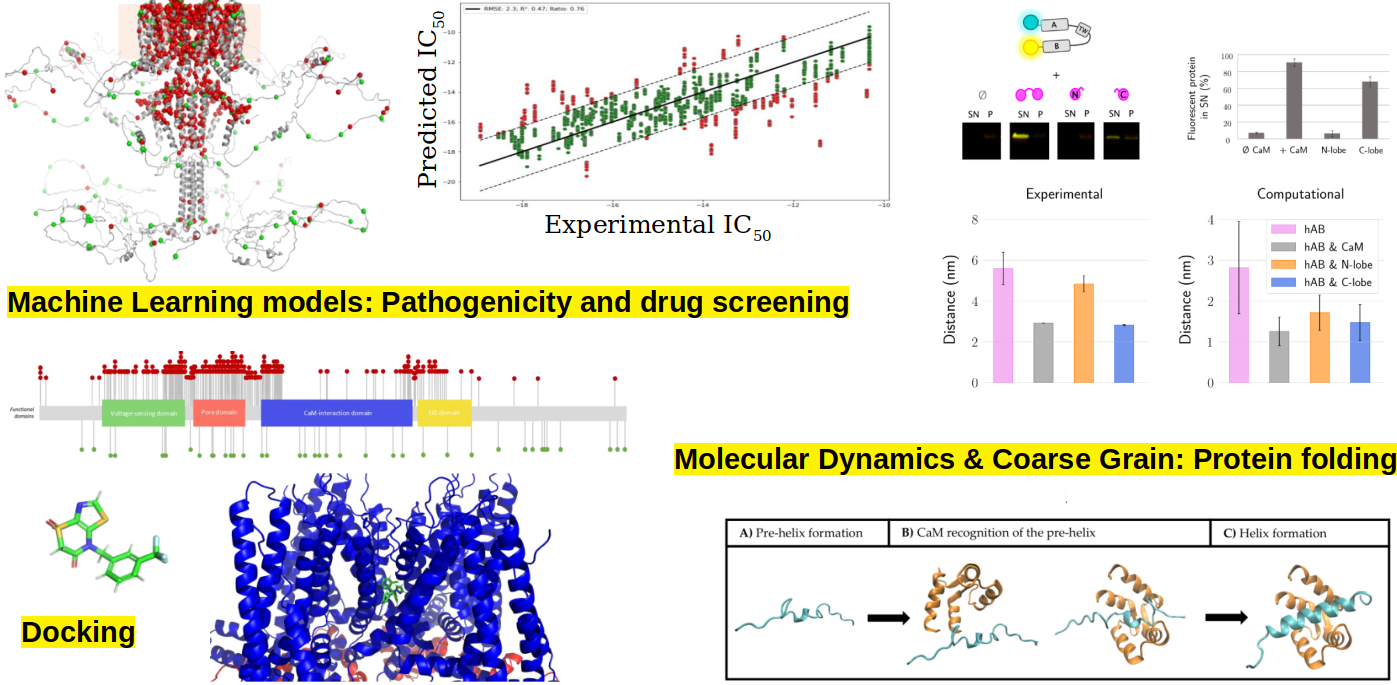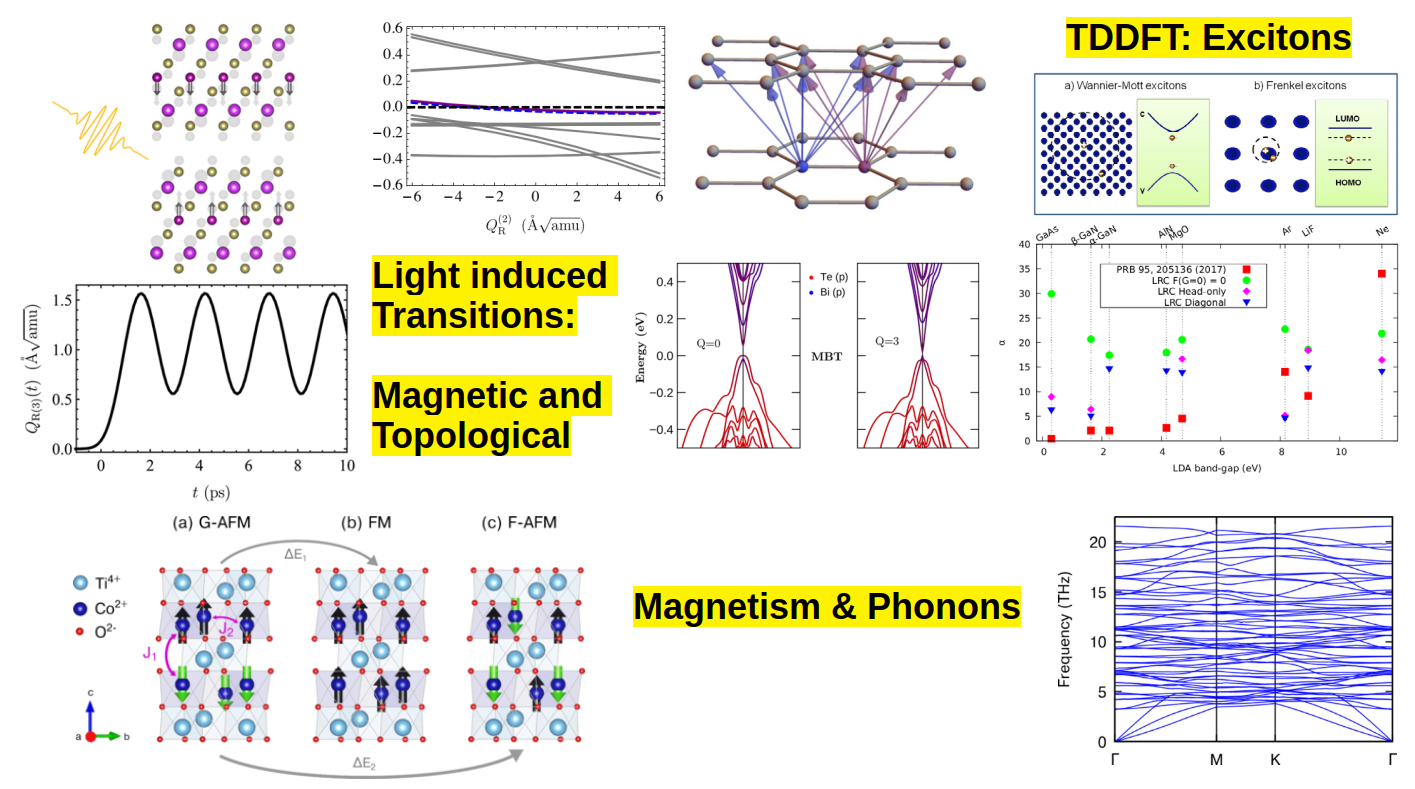Research Lines¶
Computational Biophysics¶
The complete resolution of the sequence of the human genome in 2016 has been a huge milestone that continuously reveals causal relations among pathologies and gene signaling. Moreover, the latest advances of experimental techniques, such as nuclear magnetic resonance, provide a direct access to 3D maps with atomic resolution of the proteins that form cell membranes. This new accessible structural information has become a revolution in biological sciences for the design of new drugs that improve the well‐being of humans. With this scenario in mind, physical models that mimic atomic interactions within the proteins and their posterior time evolution through molecular dynamics provide a very powerful tool for the prediction and comprehension of membrane phenomena. Theoretical simulations of proteins serve as guidance for the design of new drugs and help understanding the enormous amount of experimental information available.
- Molecular dynamics and free energy profiles.
- Coarse Grain Models applied to cotranslational protein folding.
- In-silico drug screening: Molecular Docking analysis.
- Machine Learning models applied to drug repurposing.
- Alphafold + MD to find drugable binding sites of protein targets.
- Machine learning based server to predict the pathogenicity of mutated ion channels at the clinic.
Condensed Matter Theory - Material Science¶
The control of ordered states of matter such as magnetism, superconductivity, or charge and spin-density waves is one of the more sought after effects in the field. In equilibrium, this can be achieved by turning the knobs provided by temperature, strain, pressure, or chemical composition. However, the nature of these methods limits the possibility to integrate the materials into devices for technological applications due to undesirably slow control and nonreversibility. In recent years, a new approach has emerged which allows in situ manipulation: driving systems out of equilibrium by irradiating them with light. Recent experiments have demonstrated the existence of Floquet states in topological insulators, the possibility to transiently enhance superconductivity, the existence of light-induced anomalous Hall states in graphene, light-induced metastable charge-density-wave states in TaS2, optical pulse-induced metastable metallic phases hidden in charge ordered insulating phases, and metastable ferroelectric phases in titanates.

